Expert’s Rating
Pros
- Fantastic performance
- Super-fast charger included in box
- Capable main and selfie cameras
Cons
- Bland looks
- Sub-par supporting rear cameras
- No IP rating
Our Verdict
If it weren’t for the Edge 30 Ultra, which has better specs but is only slightly more expensive, the Xiaomi 12T Pro would be relatively easy to recommend. As it is, most people are better off with Motorola’s phone.
If Xiaomi is a brand that’s still unfamiliar – and unpronounceable – to you, then it’s high time that situation changed. The Chinese giant is the world’s third-biggest phone maker after Samsung and Apple, after all
It’s pronounced shau·mee, and makes not only flagship phone to rival the best around, but also good-value cheap phones.
The 12T Pro is a bit harder to pigeonhole. A quick look at its specifications, and you might jump to the conclusion it’s a flagship. But look at its price and you’ll wonder how it’s possible to make a phone with those specs at such a low price.
There are ways and means to do it, and if you can live with the compromises Xiaomi has made, this could well be a phone to add to your shortlist.
I’d wager the main reason you’re reading this review is because you saw that 200Mp camera spec somewhere and wanted to know if the very-reasonably-priced 12T Pro is any good.
Keep reading and you’ll find out.
Features & design
- Bland design
- Stereo speakers
- Glass back with plastic frame
If one thing is clear, the 12T Pro sits a good couple of rungs down the ladder from ‘true’ flagships such as the company’s 12S Ultra and last year’s Mi 11 Ultra.
It doesn’t have an IP rating, for example, nor the latest Wi-Fi 6E. You don’t get wireless charging or a screen with curved edges.
The frame is made from plastic, not metal, and when you get beyond the 200Mp camera, the others are – in a word – lackluster.
Of those cut corners, only the last one will really matter to a lot of people, and that’s why the 12T Pro will appeal strongly to anyone that can’t afford or justify spending $1000/£1000 on their next phone.
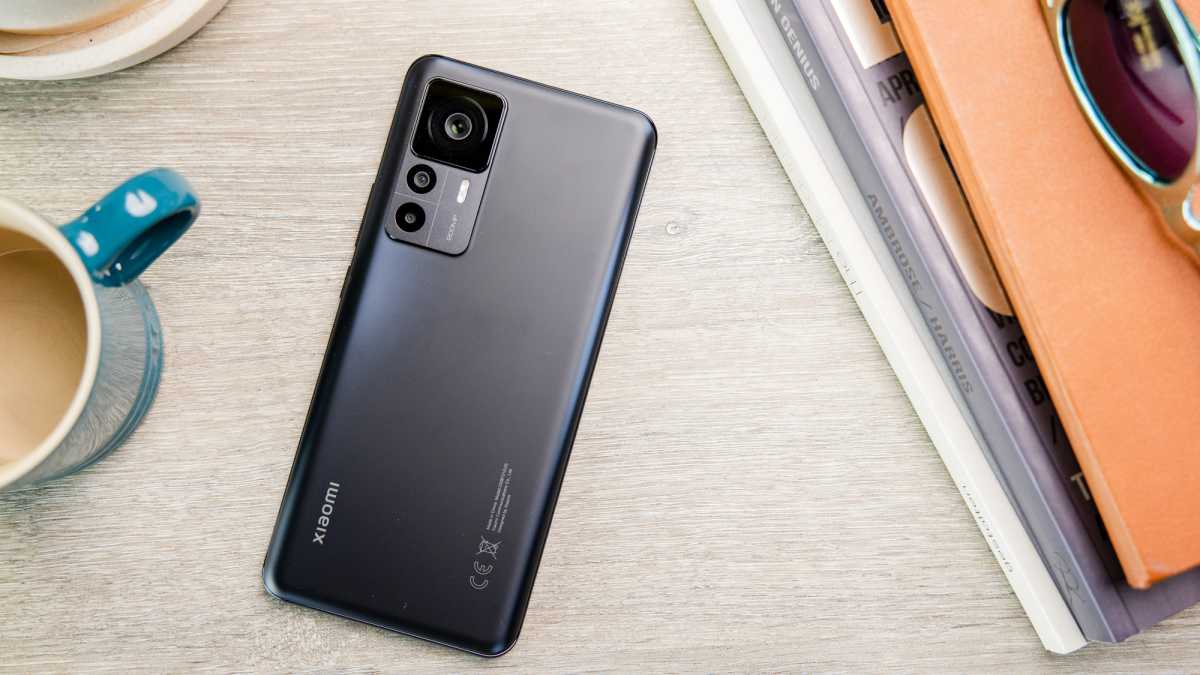
Dominik Tomaszewski / Foundry
One thing that doesn’t appeal is the 12T Pro’s rather bland design which it shares with its sibling, the 12T, reviewed. Xiaomi sent me the black version to review and that’s the dullest of the lot. The blue and silver versions are more attractive, but the completely flat screen and, dare I say, generic overall appearance means it doesn’t really stand out.
As with so many rivals, the 12T Pro is a big phone, measuring 163 x 76 x 8.6mm and weighing just over 200g.
It has stereo speakers on opposite corners and is one of increasingly few phones to still feature an IR blaster that you can use with the Mi remote app to control your TV and set-top boxes.

Dominik Tomaszewski / Foundry
Those speakers sound good for a phone, too. They’ve been tuned by Harmon Kardon and support Dolby Atmos. While that doesn’t really mean much for such tiny, limited speakers, both deliver similar volume and are great for videos and games.
Biometrics include an under-screen optical fingerprint scanner and a 20Mp punch-hole selfie camera that can be used for face recognition.
That’s less secure than using the fingerprint scanner, which I found to be quick and reliable.
Screen
- 6.67in CrystalRes AMOLED display
- 446ppi, 120Hz (480Hz touch sampling)
- HDR 10+, Dolby Vision

Dominik Tomaszewski / Foundry
As you’d rightly expect, the 12T Pro has a decent screen. Flat it may be, but the 120Hz refresh rate and AMOLED tech mean games, videos, apps and web pages look good and scroll smoothly. Colours are rich, blacks are deep and viewing angles are excellent.
Brightness is one of the compromise here, with 500 nits in normal conditions (verified by using a DataColor Spyder) and up to 900 nits peak (something I couldn’t test). It’s perfectly good, but not the brightest out there.
It’s not a variable refresh rate panel either. It can run at 30, 60, 90 or 120Hz. The newest LTPO 2.0 panels can adjust the refresh rate to as little as 1Hz to conserve battery power.
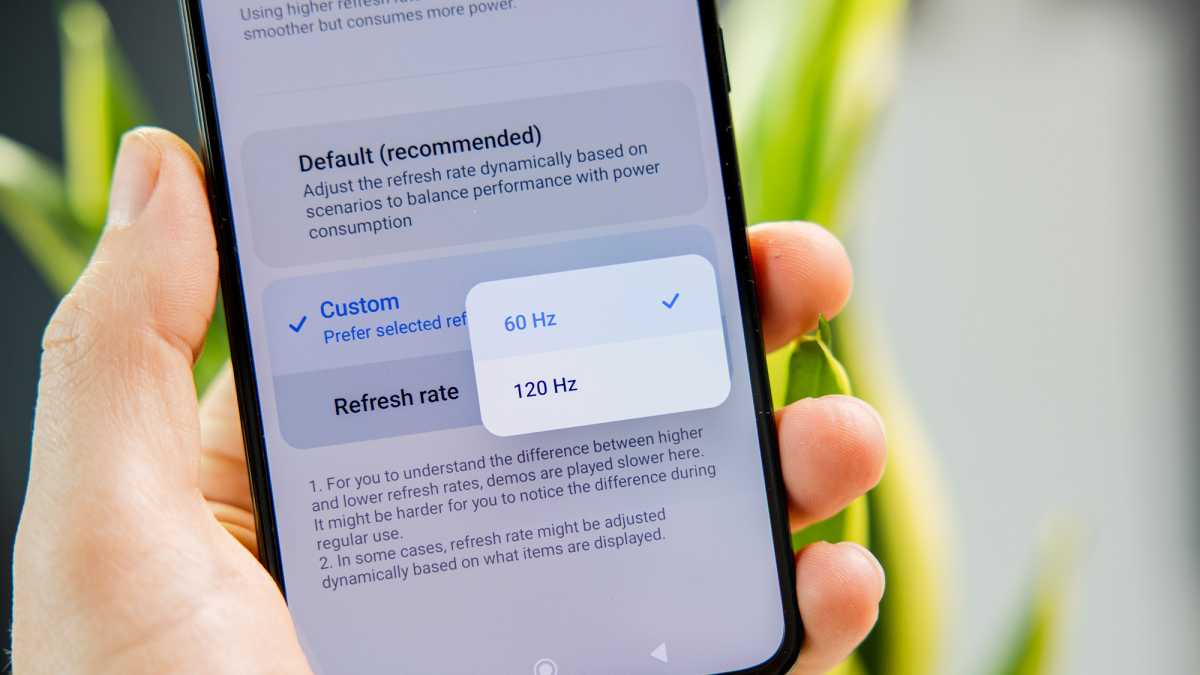
Dominik Tomaszewski / Foundry
However, once again, this isn’t a deal-breaker, and is a sensible compromise to keep the price down.
The resolution of 1220×2712 isn’t the highest either, but it’s plenty good enough for a nice, sharp image.
Performance
- Snapdragon 8+ Gen 1
- Dual 5G
The Xiaomi 12T Pro has the latest Snapdragon 8+ Gen 1 chipset from Qualcomm. It’s backed by 8GB of RAM and 128GB or 256GB of UFS 3.1 storage.
All are proper flagship components and in some countries – not the UK, sadly – you can opt for a model with 12GB of RAM.
Xiaomi says it has improved the cooling system with a vapour chamber that’s 65% larger than the 11T Pro’s.
Unfortunately, the 12T Pro still heats up noticeably when pushing the phone hard with intensive games and other apps. It managed to complete our benchmarks fine, but it’s probably best not to consider this a gaming phone and instead view it as a high-performance device for more casual use.
And in normal use, browsing the web, sending emails, taking and viewing photos, streaming Netflix and playing ‘casual’ games, the 12T Pro feels every inch the flagship.
There’s no option to expand storage using a microSD card, but the SIM tray will accept a pair of nano SIMs, both of which can be 5G.
You can also pair a physical SIM with an eSIM and get dual 5G that way too.
Cameras
- 200Mp main camera with OIS
- Wide-angle with f/2.2
- Macro with f/2.4 lens

Dominik Tomaszewski / Foundry
Just how good is that 200Mp camera? That’s the biggest question. The answer, in short, is that it’s not loads better than cameras with far fewer pixels.
It is very good, though. Just don’t expect miracles. Even the 108Mp camera on the Xiaomi 12T has too many pixels. A higher number sounds great, but the truth is that you don’t really need them.
In the default shooting mode, the 12T Pro will “bin” most of those pixels (merging every block of 16 into 1) and saves a 12.5Mp photo to your camera roll. That’s done for a variety of reasons, chief among which is storage space. You can shoot at the full 200Mp if you want, but each image will take up around 50-70MB.

Dominik Tomaszewski / Foundry
Performance is the other problem: you have to wait a few seconds between shots. There’s an in-between option to shoot at 50Mp which speeds things up a little.
Even if you don’t plan to print massive wall posters with these high resolution images, there are still advantages to having so many pixels. The main one is that you can crop in – a lot – and still end up with a detailed photo, rather than a smeary mess.
In the Gallery app, an icon appears on photos taken in the Ultra HD mode. Tap it, and ProCut opens, displaying a variety of suggested crops. You can pick one or more of these and they’ll be saved as separate photos in the camera roll.
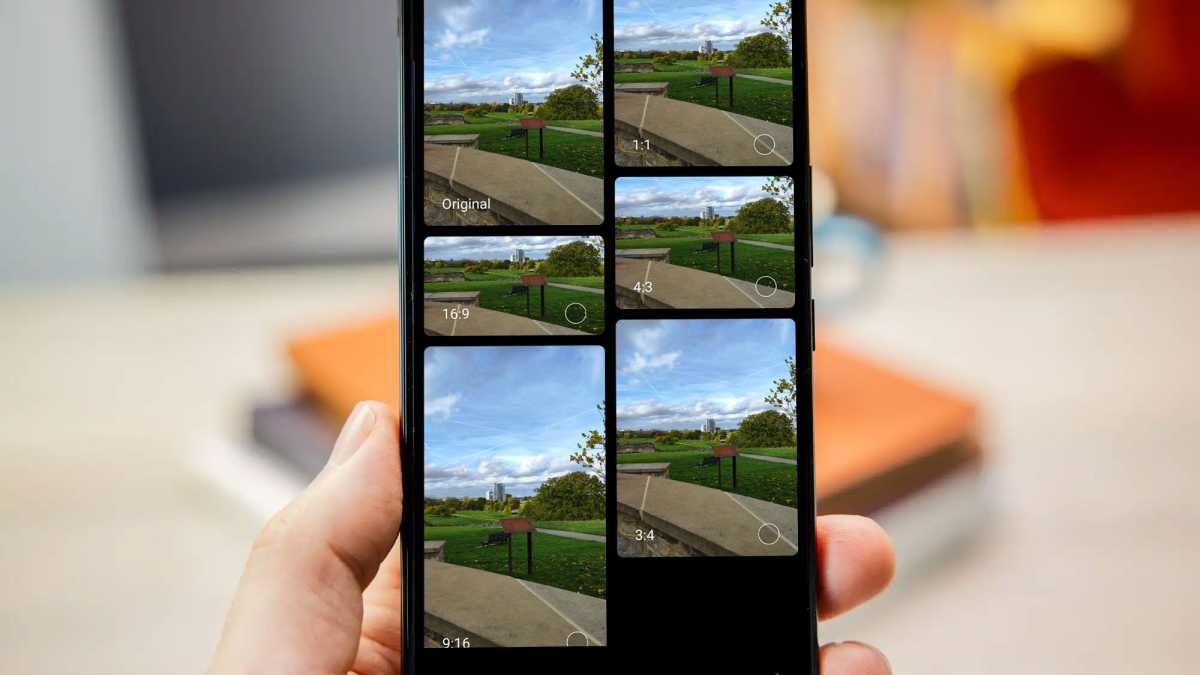
Dominik Tomaszewski / Foundry
In general, photos from the main camera are sharp and have realistic colours. Enable the AI mode and you’ll end up with oversaturated photos, which you might not appreciate.
HDR is automatic by default, but either didn’t kick in when you’d expect it to or didn’t really make a noticeable difference. In the landscape shots that you can see in the gallery below, the sky is nicely exposed, but the foreground is under-exposed and too dark.
Also, it’s annoying that there’s no indication of whether or not the autofocus has worked. This is a problem outdoors in bright conditions where it isn’t easy to see just by looking at the screen if your subject (such as the pink dahlia flower example below) is too close or not. If it is, you’ll get a blurry photo.
There’s also a lot of processing going on to sharpen photos, and this is noticeable when you zoom in and inspect the details. However, thanks to quite a bit of natural bokeh, which means blurry backgrounds, most photos tend to look quite impressive.
I was surprised by how capable the main camera is in low light, producing photos that looked much brighter than the actual scene, and that’s without swapping to the dedicated Night mode.
As mentioned, the supporting cameras aren’t great. The 2Mp macro camera seems present only to make up the numbers and the wide-angle – although capable of decent shots – has a very low 8Mp resolution.
Around the front, the 20Mp selfie camera is very good, taking nice, sharp photos and doing a decent job of generating bokeh in portrait mode.
Video-wise, the 12T Pro can shoot at 8K30, but it’s best to limit settings to 4K60 as footage will benefit from stablilisation.
Video quality doesn’t disappoint, and sound isn’t bad either. Plus, Xiaomi throws in a few fun shooting modes such as Clone, where you can appear twice, and a selection of Movie Effects including Parallel world, Slow shutter and a mode that records from the front and rear cameras at the same time.
Battery & Charging
- 5000mAh battery
- 120W wired charging
- No wireless charging
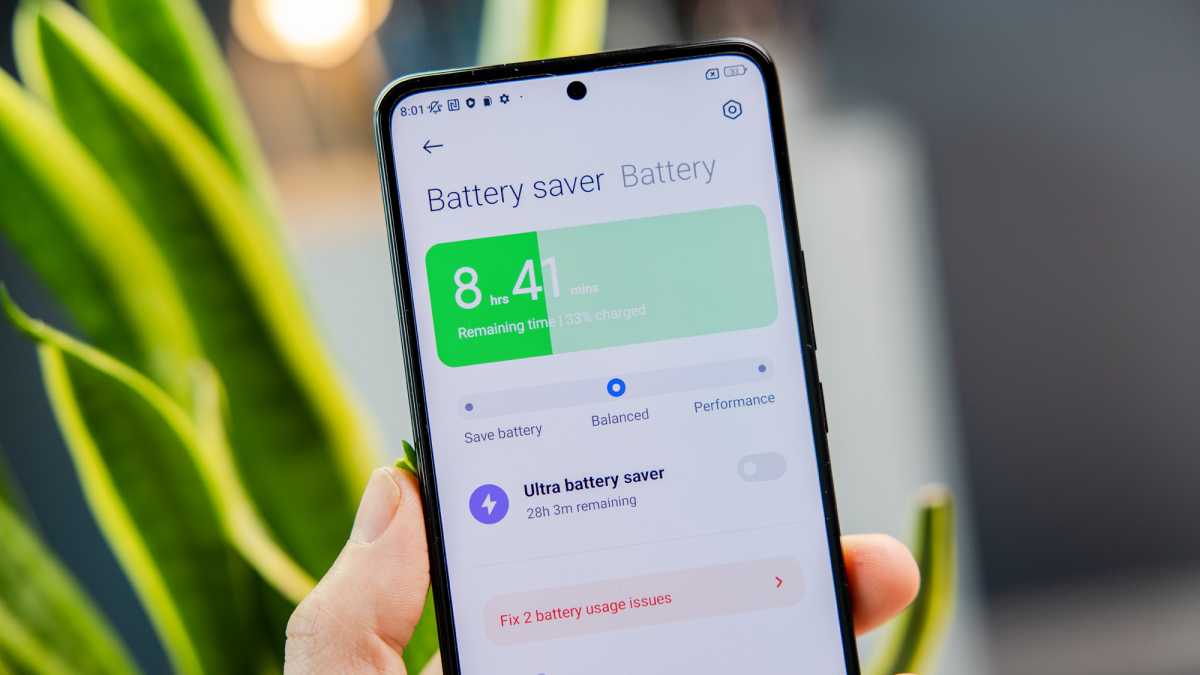
Dominik Tomaszewski / Foundry
Though it isn’t exclusive or new, the 120W wired charging is likely to be a revelation to most people buying a 12T Pro.
Xiaomi supplies the necessary charger in the box, which is a real boon. It replenishes almost 70% of the battery’s capacity in just 15 minutes, and goes on to fully charge it in under 25 minutes.
This is good news as it mitigates the fact that, despite a 5000mAh battery, the 12T Pro doesn’t last quite as long as you might think it should.
Don’t get me wrong: it isn’t bad. During the week or so I’ve used the phone, it managed to get through a full day with power to spare, even if that was only 20% or so. My colleague Anyron had a similar experience with the 12T.
It’s enough for about six or seven hours of actual screen time, with the rest draining with the screen off.
Using PCMark’s battery test, the 12T Pro lasted a similar amount of time – 10 hours 54 minutes – to the 12T which has the same battery and screen, but a Dimensity 8100 Ultra chipset.
As ever, your mileage may vary: you might be able to stretch the 12T Pro to last almost two days if you use it lightly, but it will almost certainly need that super-fast charger if you spend four or more hours playing games.
To keep costs down, there’s no wireless charging.
Software
- MIUI 13 (Android 12)
- Three years’ OS updates, four years’ security patches
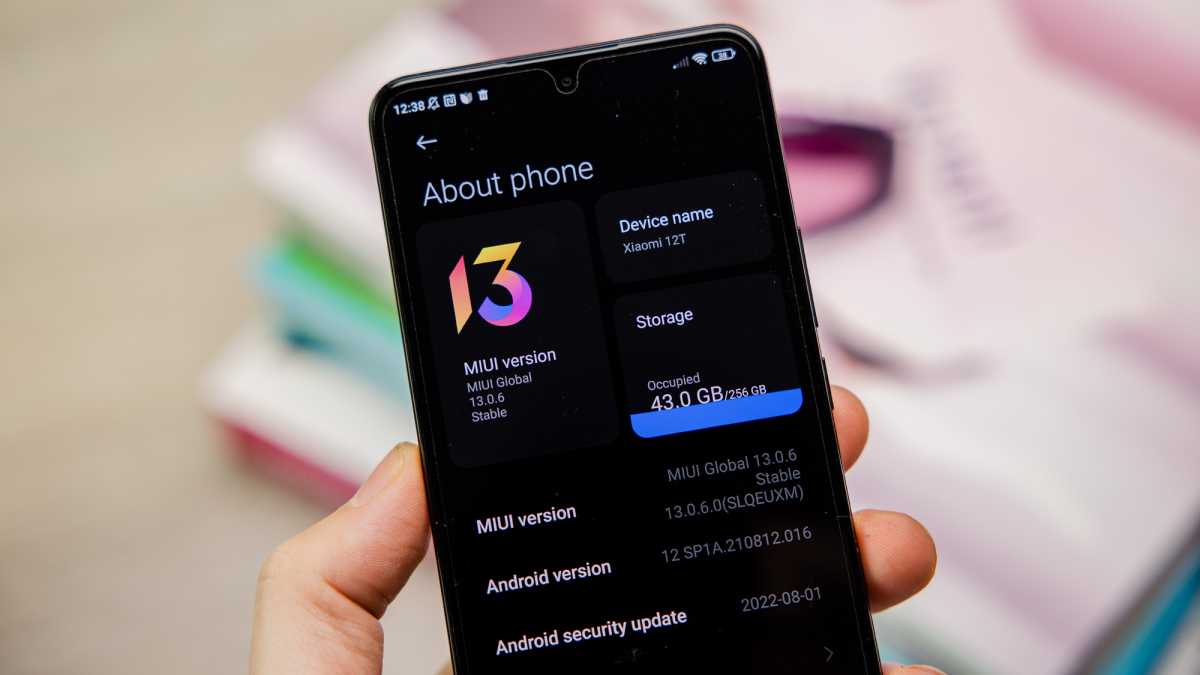
Dominik Tomaszewski / Foundry
The 12T Pro is an Android phone, but Xiaomi’s MIUI skin makes quite drastic changes to the interface compared to a lot of rivals.
I don’t mind it for the most part because it makes Android a bit more like Apple’s iOS. For example, swipe down from the right-hand side of the screen and you’ll get a control centre with lots of shortcuts to phone features as well as smart home controls.
Swipe down on the left and you get the notification shade.

Dominik Tomaszewski / Foundry
There are still too many apps preinstalled, though, including games, Booking.com and more, but many can be uninstalled simply enough.
Some can’t, though, including Xiaomi’s own apps for security, video, music and themes.
A nice extra is Game Turbo which gives you shortcuts to various features as an overlay while you play, including a voice changer.
Better news is that Xiaomi has committed to three years of Android updates (which will take the 12T Pro up to Android 15) and four years of security updates.
This is commendable stuff, as the lack of updates is usually one of the key reasons to avoid certain Android manufacturers.
Price & Availability
The Xiaomi 12T Pro costs £699 from Xiaomi’s website. It isn’t sold in the US, unfortunately, but it is available in Europe for €799.99 for the 128GB version.
It’s also sold by Currys, and on contract via Three, although at £51 per month. Carphone Warehouse was offering the same model on Vodafone for £32 per month at the time of review, but with a £99 up-front cost compared to £30 with Three.
This makes it considerably cheaper than many Android flagships, though you do need to bear in mind the compromises that have been made in order to save money.
You’ll be hard pushed to find a better-specc’d phone for the same price, but Motorola’s Edge 30 Ultra, reviewed, is arguably worth the extra £50.
It has the same 200Mp camera, the same size screen (at a lower resolution), a better set of supporting cameras, 12GB of RAM (in the UK), Wi-Fi 6E, 125W wired charging plus 50W wireless charging. Importantly, it runs a close-to-stock version of…
